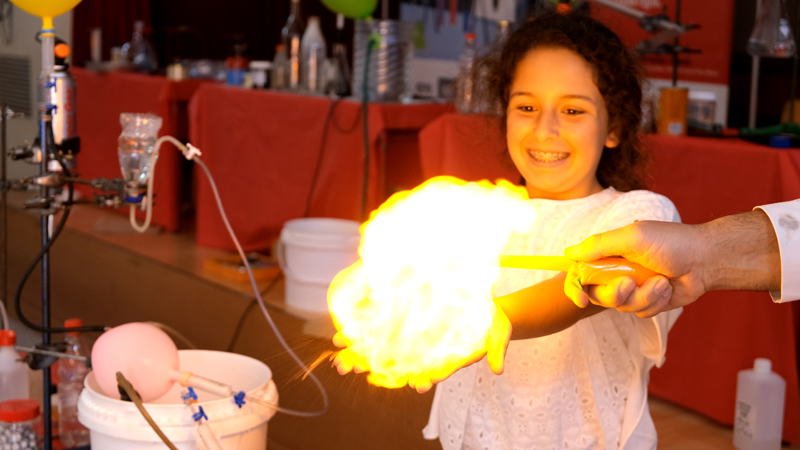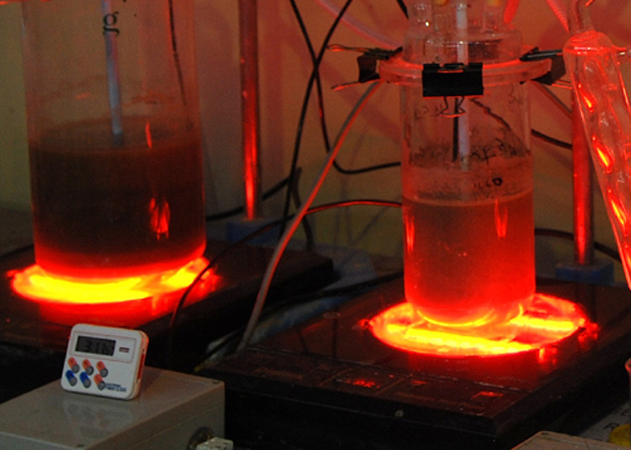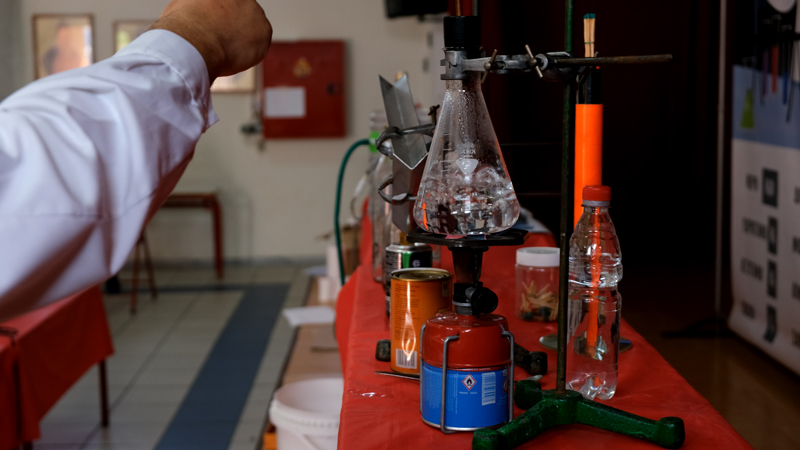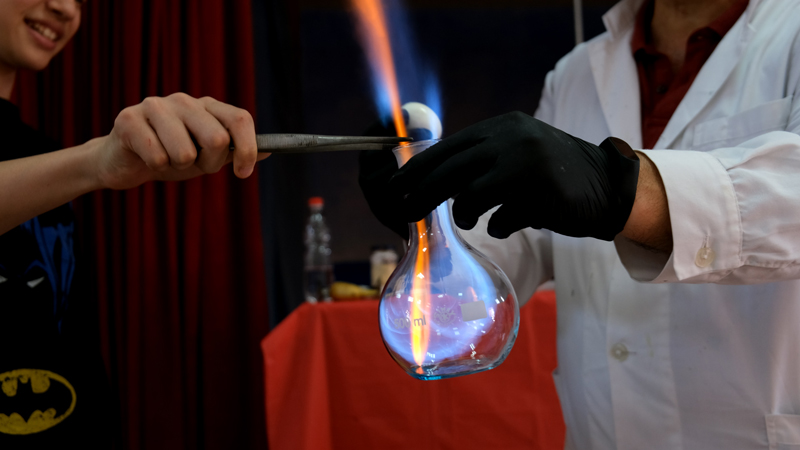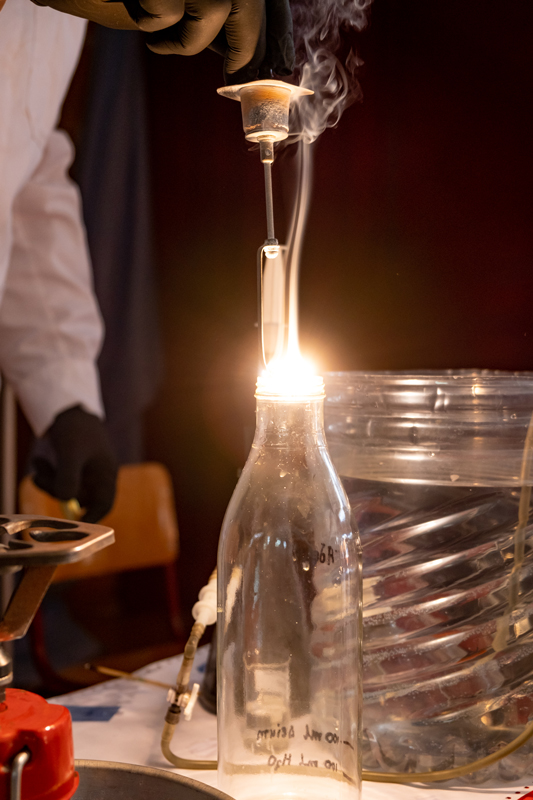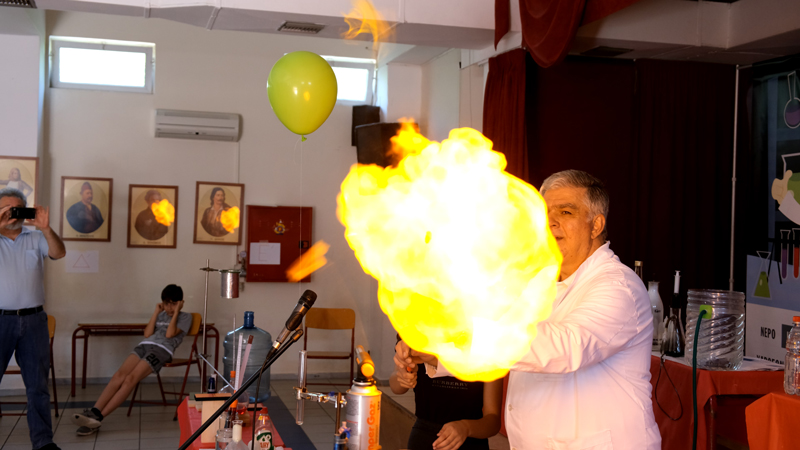ΟΡΥΚΤΟΙ ΑΝΘΡΑΚΕΣ ή ΑΝΑΝΕΩΣΙΜΕΣ ΠΗΓΕΣ ΕΝΕΡΓΕΙΑΣ;
Εργαστήριο Πειραμάτων
Ο λόγος … για τα Ορυκτά καύσιμα / Οφέλη και παρενέργειες
Τα ορυκτά καύσιμα είναι η κύρια πηγή ενέργειας που έχουμε σε όλο τον κόσμο. Δημιουργήθηκαν στη διάρκεια γεωλογικών μεταβολών, με μια φυσική διαδικασία αναερόβιας αποσύνθεσης νεκρών και θαμμένων ζωικών και φυτικών οργανισμών, κατά κανόνα θαλάσσιας προέλευσης (πλαγκτόν), με τη συμμετοχή βακτηριδίων. Περιλαμβάνουν μια μεγάλη ποσότητα ενέργειας αφού υποβλήθηκαν στη θερμότητα και την πίεση του φλοιού της Γης για τουλάχιστον 450 εκατομμύρια χρόνια.
Παράλληλα όμως έχουν επιβλαβή επίδραση στο περιβάλλον. Tα «βρόμικα» αυτά καύσιμα όπως αποκαλούνται έχουν ένα τίμημα πολύ υψηλό, που αφορά στην ίδια μας την επιβίωση. Ακούμε για κλιματική κρίση, υποβάθμιση φυσικού περιβάλλοντος, επιβάρυνση της δημόσιας υγείας. Τι ισχύει;
Μέσα από εντυπωσιακά πειράματα επίδειξης οι μαθητές θα καταλάβουν ότι:
- Aπό την καύση των ορυκτών καυσίμων (όπως πετρέλαιο φυσικό αέριο, γαιάνθρακες) προκύπτουν πολλά αέρια απόβλητα, κυρίως διοξείδιο του άνθρακα, «θειούχες ενώσεις» και «οξείδια του αζώτου» που αντιδρούν με την ατμοσφαιρική υγρασία (σταγονίδια νερού) ή το νερό της βροχής και σχηματίζουν οξέα.
- H «όξινη βροχή» που προκύπτει, καταστρέφει τα έμβια όντα (κυρίως φυτά και δέντρα) και τα άβια στοιχεία (πολιτισμικά μνημεία).
- Η απάντηση στις δυσμενείς επιπτώσεις που προκαλεί η καύση των ορυκτών καυσίμων και όχι μόνο, είναι
- η παραγωγή ηλεκτρικής ενέργειας από ανανεώσιμες πηγές ενέργειας,
- η χρήση καθαρών τεχνολογιών μηδενικών ρύπων.
Επιπρόσθετα οι μαθητές θα έχουν τη μοναδική ευκαιρία να παρακολουθήσουν βιωματικά εντυπωσιακές μετατροπές ενέργειας και συγκεκριμένα ηλεκτρική ενέργεια από:
- ηλιακή – φωτεινή ενέργεια στα … φωτοβολταϊκά,
- αιολική ενέργεια στις … ανεμογεννήτριες,
- τη δυναμική του νερού που θέτει σε κίνηση υδροστρόβιλο, και αυτός με τη σειρά του την ηλεκτρογεννήτρια,
- τη χημική ενέργεια του υδρογόνου σε … «Κυψέλη υδρογόνου».
Ενδεικτικά πειράματα που θα παρουσιασθούν:
- Γεμίζοντας ένα μπουκάλι με … «το ζωογόνο αέριο»
- «Μπαλόνια με … ανθρακικό» …
- «Ανάβει … σβήνει» … ανίχνευση Ο2 και CO2 με παρασχίδα ξύλου.
- « Ένα σύρμα πιάτων τυλίγεται στις φλόγες» … υπέρλαμπρη καύση ατσαλόμαλλου
- «Το πνίξιμο της φλόγας»
- «Όξινες φυσαλίδες» … που αλλάζουν το χρώμα των δεικτών
- «Ζελεδάκια Gummy bear … που χορεύουν» … εντυπωσιακή καύση ζάχαρης
- «To μαύρο τζίνι… από το λυχνάρι του Αλαντίν» … αφυδατώνοντας τη ζάχαρη
- «…Και εγέννετω Φώς» … Υπέρλαμπρη καύση μετάλλου
- «Εξαφανίζοντας … ένα κομμάτι κάρβουνου»
- «Ο ατμοστρόβιλος του Ήρωνα σε δράση» … παράγοντας ηλεκτρικό ρεύμα
- «Παγιδεύοντας τα καυσαέρια» … θάλαμος παραγωγής και συλλογής καυσαερίων
Μια πρώτη εισαγωγή για το θέμα των καύσεων θα γίνει και σε μαθητές Δημοτικού (και όχι μόνο) μέσα από σειρά εντυπωσιακών πειραμάτων, όπως:
- «Ρουκέτα αλκοόλης … μια εντυπωσιακή απογείωση» … καύση οινοπνεύματος.
- «Το αέριο που βρυχάται», παραγωγή, συλλογή και αποθήκευση υδρογόνου.
- «Ανερχόμενες φυσσαλίδες Υδρογόνου» … Εντυπωσιακή καύση υδρογόνου
- «Πύραυλος κροτούντος αερίου»
- «Από την πυρίτιδα στη στράκα στρούκα» … ανάφλεξη και καύση μαύρης πυρίτιδας (ενέργεια από φλόγα ή φως)
- «To μπουκάλι που … λιώνει» … καύση ζάχαρης … χωρίς θέρμανση
- «Πιστόνι φωτιάς» … Πόσο εύφλεκτος μπορεί να γίνει ο συμπιεσμένος αέρας;
- «Cotton gun – Flash paper» … εντυπωσιακή καύση βαμβακοπυρίτιδας – νιτροκυτταρίνης
- «Ο πουλ πουλ» … φλαμπέ
Τα πειράματα απευθύνονται σε:
- μαθητές ηλικίας 9-17 ετών
- δασκάλους και καθηγητές πρωτοβάθμιας & δευτεροβάθμιας εκπαίδευσης
- Ευρύ κοινό

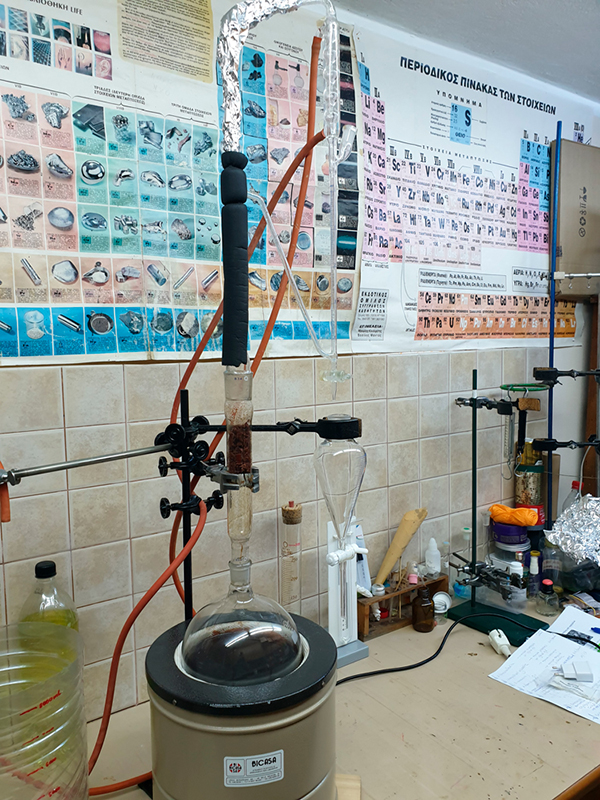
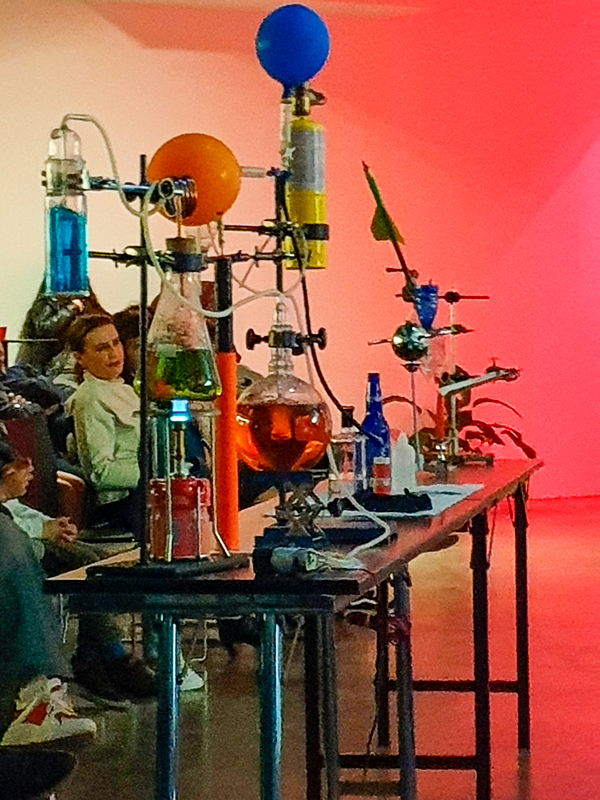
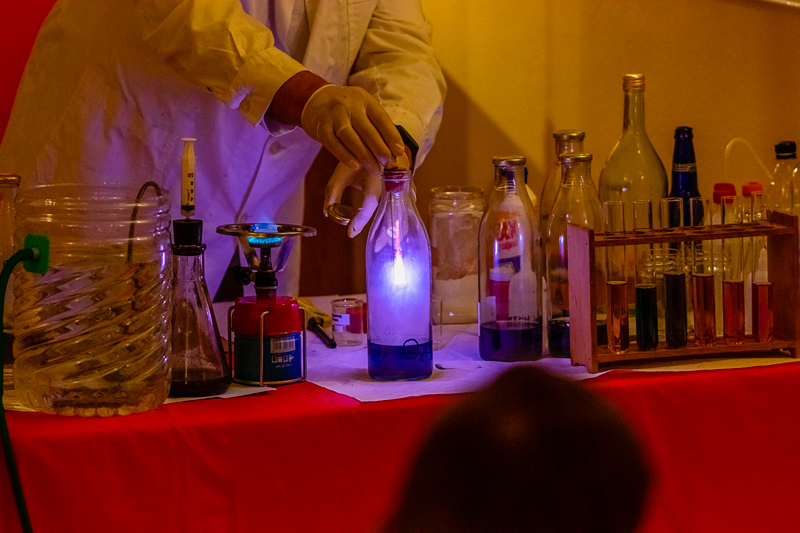
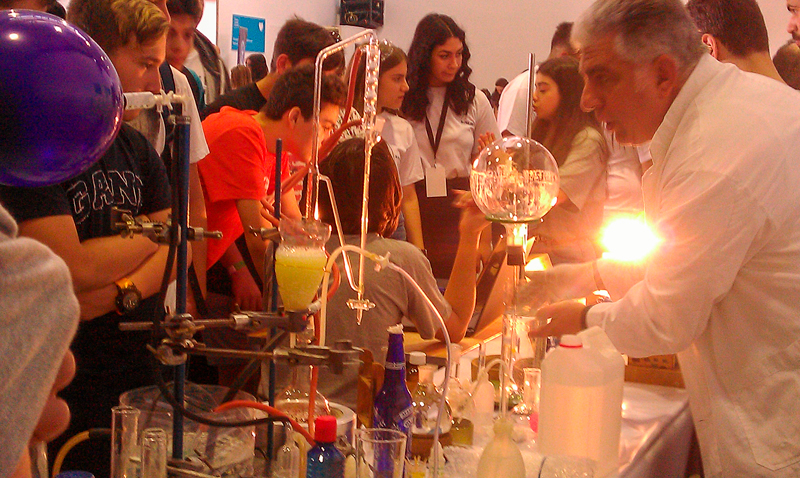
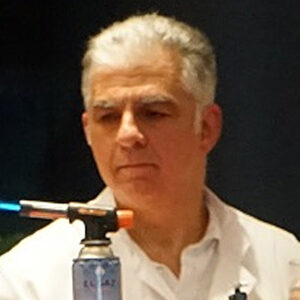 Γεννήθηκε το 1966 στη Βραζιλία και μεγάλωσε στην Αθήνα στην περιοχή του Θησείου. Είναι απόφοιτος της Σχολής Θετικών Επιστημών και πτυχιούχος του Τμήματος Χημείας του Πανεπιστημίου Αθηνών, με εξειδίκευση στην Επικοινωνία της Επιστήμης.
Εργάσθηκε στο Εργαστήριο Φαρμακοδιεγέρσεως - ελέγχου Doping, του Ολυμπιακού Αθλητικού κέντρου Αθηνών «ΣΠΥΡΟΣ ΛΟΥΗΣ», ως ερευνητής στο Εργαστήριο Οργανικής Χημείας του Πανεπιστημίου Αθηνών σε συνεργασία με το Εργαστήριο Βιοχημείας του Κέντρου Πυρηνικών Ερευνών του Saclay (Γαλλία) - σχετική ανακοίνωση στο 23ο Ευρωπαϊκό Συμπόσιο Πεπτιδίων, Σεπτέμβριος 1994, PRAGA PORTOGALIA, στο Ινστιτούτο Μεσογειακών Δασικών Οικοσυστημάτων και Τεχνολογίας Δασικών Προϊόντων (Ε.Θ.Ι.Α.Γ.Ε) και στη Διεύθυνση Υγειονομικού Ελέγχου & Περιβαλλοντικής Υγιεινής στην ΠΕ Ανατολικής Αττικής.
Από το 2008 ασχολείται αποκλειστικά με την Επικοινωνία της Επιστήμης. Από τον Μάιο του 2015 και σε συνεργασία με την Ένωση Ελλήνων Φυσικών αναπτύσσει το δικό του πρόγραμμα SCIENCE IS FUΝ, μια πρωτότυπη εκπαιδευτική δράση που παρουσιάζει τις φυσικές επιστήμες μέσα από μία σειρά ελκυστικών επιστημονικών πειραμάτων σε μαθητές όλων των βαθμίδων, χρησιμοποιώντας τον μοναδικό και ιδιαίτερα θεαματικό συνδυασμό πειραματικής επίδειξης και διάλεξης.
Παράλληλα συμμετέχει στην ομάδα επικοινωνίας της επιστήμης των Science Reactors, συνεργάζεται με τους μη κερδοσκοπικούς εκπαιδευτικούς οργανισμούς «Άτρακτος - Το Σχολείο της Ζωής», «Επιστήμη Επικοινωνία – SciCo», το Βιωματικό και Ψυχαγωγικό Θεματικό Πάρκο Paradise Park, και το Μουσείο Φυσικής Planet Physics, ενώ από το 2021 συμμετέχει ανελλιπώς στο Φεστιβάλ Γρίφων & Επιστήμης του Καστελλόριζου.
Από το 2018 έως σήμερα, έχει διευρύνει το εναλλακτικό αυτό πρόγραμμα εκπαίδευσης, παρουσιάζοντάς το σε περισσότερα από 870 σχολεία της πρωτοβάθμιας και δευτεροβάθμιας εκπαίδευσης, με ξεχωριστή επιτυχία.
Από το Φεβρουάριο του 2023 ιδρύει τη δική του εταιρεία, με τον ίδιο διακριτικό τίτλο SCIENCE IS FUN, με κύριο σκοπό την Επικοινωνία της Επιστήμης, παρέχοντας πλέον υπηρεσίες υποστηρικτικές προς την Εκπαίδευση μέσα από τη δημιουργία, τον σχεδιασμό και την παρουσίαση εκπαιδευτικών προγραμμάτων.
Γεννήθηκε το 1966 στη Βραζιλία και μεγάλωσε στην Αθήνα στην περιοχή του Θησείου. Είναι απόφοιτος της Σχολής Θετικών Επιστημών και πτυχιούχος του Τμήματος Χημείας του Πανεπιστημίου Αθηνών, με εξειδίκευση στην Επικοινωνία της Επιστήμης.
Εργάσθηκε στο Εργαστήριο Φαρμακοδιεγέρσεως - ελέγχου Doping, του Ολυμπιακού Αθλητικού κέντρου Αθηνών «ΣΠΥΡΟΣ ΛΟΥΗΣ», ως ερευνητής στο Εργαστήριο Οργανικής Χημείας του Πανεπιστημίου Αθηνών σε συνεργασία με το Εργαστήριο Βιοχημείας του Κέντρου Πυρηνικών Ερευνών του Saclay (Γαλλία) - σχετική ανακοίνωση στο 23ο Ευρωπαϊκό Συμπόσιο Πεπτιδίων, Σεπτέμβριος 1994, PRAGA PORTOGALIA, στο Ινστιτούτο Μεσογειακών Δασικών Οικοσυστημάτων και Τεχνολογίας Δασικών Προϊόντων (Ε.Θ.Ι.Α.Γ.Ε) και στη Διεύθυνση Υγειονομικού Ελέγχου & Περιβαλλοντικής Υγιεινής στην ΠΕ Ανατολικής Αττικής.
Από το 2008 ασχολείται αποκλειστικά με την Επικοινωνία της Επιστήμης. Από τον Μάιο του 2015 και σε συνεργασία με την Ένωση Ελλήνων Φυσικών αναπτύσσει το δικό του πρόγραμμα SCIENCE IS FUΝ, μια πρωτότυπη εκπαιδευτική δράση που παρουσιάζει τις φυσικές επιστήμες μέσα από μία σειρά ελκυστικών επιστημονικών πειραμάτων σε μαθητές όλων των βαθμίδων, χρησιμοποιώντας τον μοναδικό και ιδιαίτερα θεαματικό συνδυασμό πειραματικής επίδειξης και διάλεξης.
Παράλληλα συμμετέχει στην ομάδα επικοινωνίας της επιστήμης των Science Reactors, συνεργάζεται με τους μη κερδοσκοπικούς εκπαιδευτικούς οργανισμούς «Άτρακτος - Το Σχολείο της Ζωής», «Επιστήμη Επικοινωνία – SciCo», το Βιωματικό και Ψυχαγωγικό Θεματικό Πάρκο Paradise Park, και το Μουσείο Φυσικής Planet Physics, ενώ από το 2021 συμμετέχει ανελλιπώς στο Φεστιβάλ Γρίφων & Επιστήμης του Καστελλόριζου.
Από το 2018 έως σήμερα, έχει διευρύνει το εναλλακτικό αυτό πρόγραμμα εκπαίδευσης, παρουσιάζοντάς το σε περισσότερα από 870 σχολεία της πρωτοβάθμιας και δευτεροβάθμιας εκπαίδευσης, με ξεχωριστή επιτυχία.
Από το Φεβρουάριο του 2023 ιδρύει τη δική του εταιρεία, με τον ίδιο διακριτικό τίτλο SCIENCE IS FUN, με κύριο σκοπό την Επικοινωνία της Επιστήμης, παρέχοντας πλέον υπηρεσίες υποστηρικτικές προς την Εκπαίδευση μέσα από τη δημιουργία, τον σχεδιασμό και την παρουσίαση εκπαιδευτικών προγραμμάτων. Λίγα λόγια για το Science is Fun…
Το “Science is Fun” παρουσιάζει τις φυσικές επιστήμες μέσα από μία σειρά ελκυστικών και εντυπωσιακών πειραμάτων. Με εργαλείο την αναπαράσταση, την ερμηνεία και την ανάλυση απλών φυσικών φαινομένων στοχεύει να προσελκύσει την αγάπη, το ενδιαφέρον, την περιέργεια και την κριτική ικανότητα των παιδιών για τον κόσμο των φυσικών επιστημών. Και αυτό το επιτυγχάνει καθώς στηρίζεται: στην έρευνα, στην παρατήρηση και στο πείραμα.
Τα παιδιά πάντα ρωτούν πώς και γιατί. Και δεν υπάρχει καλύτερος και πιο διασκεδαστικός τρόπος προσέγγισης και κατανόησης της επιστήμης από τα πειράματα επίδειξης!
O Δημήτρης Κονιδιτσιώτης είναι ο εμπνευστής και ιδρυτής του Scienceis Fun (2010), ενός τρόπου επικοινωνίας της Επιστήμης, με σκοπό:
• Να αναδείξει τη σχέση των Φυσικών Επιστημών με την καθημερινή μας ζωή,
• Να μυήσει τους μαθητές και το ευρύ κοινό στην ομορφιά και τη φαντασία της επιστημονικής σκέψης,
• Να κεντρίσει το ενδιαφέρον τους για την επιστήμη, την τεχνολογία και την καινοτομία.
• Να προσελκύσει τους νέους στις Φυσικές Επιστήμες μέσω διαφορετικών μεθόδων διδασκαλίας,
• Να αποδείξει ότι ορισμένα εκπληκτικά επιστημονικά πειράματα μπορούν – μέσω της βιωματικής μάθησης – να γίνουν με απλά καθημερινά υλικά, που βρίσκονται γύρω μας.
Με ποιό τρόπο:
• Χρησιμοποιώντας τον κόσμο της καθημερινής ζωής ως αντικείμενο και εργαλείο διδασκαλίας,
• Με συμμετοχή σε εκδηλώσεις και φεστιβάλ επιστήμης,
• Με τον σχεδιασμό και την παρουσίαση εκπαιδευτικών προγραμμάτων –με τρόπο απλό και κατανοητό- τα οποία απευθύνονται κυρίως σε μαθητές και καθηγητές της Β΄ βάθμιας Εκπαίδευσης, αλλά και στο ευρύτερο κοινό.
